Installing a 4kW solar system can be beneficial as it helps to combat power outages and significantly reduce electricity costs. On average, a 4kW solar system can provide up to 3000 watts per day, sufficient to charge a 3-bhk home for 12 hours. These affordable solar power systems require a small rooftop area to accommodate.
Jackery Solar Generators are sustainable and economical generators that combine portable power stations and solar panels to charge your appliances. These are portable and foldable to be carried out efficiently and have enough capacity to charge heavy-duty devices during power outages.
Key Takeaways
- If you use a 200-watt solar panel, you would require 20 panels to create a 4kW solar system.
- A solar panel system can reduce your electricity bills by up to 105%.
- Solar power generated 165 billion kWh of electricity in the US in 2023.
What Is A 4kW Solar System?
A 4kW solar system would produce 4000 kilowatt-hours of electricity per year in standard conditions. You can build a similar system by purchasing panels that add up to 4000 watts of output rating. However, to make the right purchase, it is also essential to consider the location, roof angle, and product quality. The components of a solar power system include solar panels, a DC to AC inverter, a mounting system, cabling, and permit instructions.
The solar panels capture solar energy when placed outside during daylight and convert it into electrical energy. This radiation is absorbed by the photovoltaic cells present in the solar panels. When the cell's internal electrical field is created, the solar energy creates electrical charges in response to the field, and the electricity starts to flow. Another type of solar system is a solar-thermal power system that uses mirrors to reflect sunlight onto receivers and convert it into heat energy. This heat energy is used to produce electricity for later use and is primarily used in large power plants.
How Many Solar Panels Are Needed for A 4kW Solar System?
For a 4kW solar system, you will need panels that can provide 4000 watts of energy. For example, if you consider a panel of 200 watts, you may need 20 panels to provide 4kWh of output.
Most household solar panels are 265 watts, balancing cost and efficiency. High-end solar panels have wattage between 300-400 watts. Here are the steps to calculate the solar panels needed for a solar system:
Step 1: Calculate The Electricity Consumption
Kilowatt-hours is the measure of electricity consumed by a device over some time. Most devices are rated in watts. For example, if you left your laptop charging all night, it might consume 560 watt-hours or 0.56 kWh of electricity (70 watts x 8 hours/1000 = 0.56 kWh). In a perfect location, a 4kW solar panel installation may produce 4kW electricity, but usually, it is lower due to certain factors like location, shade, dirt on panels, etc.
Step 2: Calculate the Number Of Solar Panels
If you have installed a 250-watt solar panel, you can divide it by 4000 watts to get the number of panels.
4000 watts/250 watts = 16 panels.
What Size of Battery Do I Need for A 4kW Solar System?
Battery size depends on your energy goals, size, type, and the number of appliances you want to power. For a 4kW solar system, a battery of 5-6kW would be ideal. Battery storage is essential to increase energy cost savings. Battery storage stores energy consumption in hours for nights and outages and keeps your solar system productive when the grid is down.
It is typically found that to produce 100% of annual electricity consumption by a solar system, a battery of 10kWh can power essential devices during a three-day outage. Here are the steps to calculate the correct battery size you will need:
Step 1: Estimate Your Storage Needs
The first step is calculating the electricity you need to charge your device or for storage. You may need enough storage to use electricity during peak hours (typically 5-10 p.m.). Comfort appliances, kitchen appliances, and entertainment devices can be continuously used during this hour. If your goal is to provide backup power to your home, then you may need to do a rough calculation to figure out what you want to power and for how long.
For example, powering essential devices like lights, TVs, Wi-Fi, heaters, and kitchen appliances takes around 8kWh of energy for 24 hours. Therefore, you need at least 8kWh or more battery capacity to power these devices.
Step 2: Calculate Battery Size
First, you need to determine the daily power consumption in kWh to size the battery. You can check your utility bills, which have the daily average kWh consumption. You can also calculate annual consumption with the last 12 power bills. After you know your annual consumption, divide it by 365 to get the daily average.
Lithium batteries are rated for 80% depth-of-discharge as this ensures some charge reserves and helps extend the battery life. For example, if you need 12kWh/day and the battery has 80% DoD, consider a 14kWh battery.
Some batteries are rated by amperage and volts, and you can calculate watts by multiplying amp hours (Ah) by volts (V). For example, a 400Ah battery operating at 16 volts will have a capacity of 6.4kWh.
Step 3: Pick A Battery Size
Once you know your storage needs, it’s time to purchase batteries. Lithium-ion batteries offer anywhere from 3 to 18 kWh of usable capacity per battery, although a majority are between 9 and 15 kWh. Some batteries can also be stacked together to provide more storage and create multiple-sized battery systems.
What Size of Inverter Do I Need for A 4kW Solar System?
Inverters are one of the essential components of a solar system, and for a 4kW solar system, a 3kW inverter would be sufficient. An inverter is used to supply surge power and usual power. A surge or peak power is the maximum power an inverter can provide for a short time for appliances that need a higher start-up surge. For example, electric motors, compressors, and AC. On the other hand, usual or typical power is supplied steadily, which is lower than surge power. For example, power pulled by a refrigerator after a few seconds is its average power.
Here are the steps to calculate the right size of inverter you would need for your power requirement:
Step 1: Determine The Total Wattage Of The Appliances
To determine the total wattage of the devices you use at home, you will need to add up the wattage consumed by each device. You can find the wattage on the device or in its user manual. Generally, a small inverter can be sufficient to supply power to small devices. There are two types of wattages that you may need to consider while calculating the total wattage: running and starting wattage.
A running wattage operates the device, and a starting wattage is required to start it. Devices such as electric motors, refrigerators, and ACs usually have a higher starter wattage than running wattage. An inverter with the right size and capacity must handle both the running and starting wattages.
Step 2: Check The Efficiency Of The Inverter
Efficiency refers to the percentage of input power converted to output power. Various factors can reduce or increase an inverter's efficiency, but generally, an inverter with a high-efficiency rating can convert a higher percentage of input power into output power.
Step 3: Calculate The Number Of Batteries
Inverters use deep-cycle batteries to charge your appliances, which can be a significant cost factor. The size of the inverter will determine the number of batteries it will use to power the appliances. For example, a large inverter would be enough to power essential devices. Hence, it can minimize the number of batteries and significantly reduce costs. However, it is advised to run only some of the appliances on an inverter as it may shorten the lifespan of the batteries.
The most cost-effective way is to run essential devices using an inverter during power cuts and non-essential devices using grid power.
To calculate the number of batteries, you should know the number of backup hours you want by using this formula:
Backup Hours = (Inverter voltage) x (Battery bank capacity) x (Battery depth of discharge) x (Inverter Efficiency) / (Load)
For example, if you need 8 hours of backup power for a 1200-watt load and have a 52-volt inverter with 4 500 amp-hour batteries connected in series:
52V x 500Ah x 0.8 x 0.8/2000 = 8 hours backup time
Step 4: Calculate The Size Of Inverter
To measure how much battery drain your inverter will need, you can calculate the ampere required, as this might be useful to determine the right battery size for your inverter. You can use the following formula:
Volts x Amps = watts
or
Watts / Volts = amps
1500-watt example:
1500 / 150V ac = 10 amps AC
or
1500 / 15V dc = 100 amps DC battery drain/hour.
How Much Electricity Does A 4kW Solar System Produce?
Solar system technology has enabled the supply of renewable solar energy worldwide. A 4kW system is ideal and has the potential to provide free access to solar energy in your home and office. Although the electricity output is dependent on different variables, a 4kW solar system can produce around 19kWh of electricity per day, 590kWh per month, and 7000kWh per year.
This estimation is rough as there is no straightforward answer to quantify the electricity produced by a 4kW solar system. Here are some factors that influence the quantity of electricity produced and can help you make better decisions while setting up your solar system:
Weather and Climate Change
You might be unaware that solar panels perform better in cold rather than high temperatures. This is because when solar panels are exposed to high temperatures for extended periods, heat exposure can degrade the photovoltaic cells and lead to a voltage drop. Whenever the temperature rises above 25˚C, the solar panel's output reduces by 0.25-0.5%, depending on the type of cells.
Shade
Solar panels should not be kept in the shade because even if they fall in a small area, it can disrupt the current in the entire string. Solar panel cells are connected in series, and shade can affect its current flow. There can be days when shade cannot be avoided altogether, and in such situations, panels should be avoided when wiring in series.
Roof Orientation
If you live in the northern hemisphere, you should position the solar panels facing the south direction because the sun is along the southern part of the sky. This will allow the solar panels to capture maximum sunlight overall. Next, when placed south-facing, the solar panels should be tilted between 30 and 40 degrees, ensuring the panels capture sunlight at a perpendicular angle. In winter, this also allows snow to slide off of the solar panels. The solar panel's inclination should be adjusted accordingly considering the weather change, latitude, longitude, and geographical locations.
Geographical Location
Sunlight hours vary from location to location, and not all areas have the same amount of sunlight. Factors that identify insolation include local weather, latitude, and time of the year. Hence, the solar panel output will differ depending on the climate in other locations.
Solar Panel Surface
You might not know this, but keeping your solar panel surface clean also affects photoelectric power conversion. Pollution, rainfall, snow, sandstorms, etc., can reduce the efficiency of solar panels. Therefore, it is essential to maintain a clean routine for your solar power system during changing seasons. Springtime can be ideal for cleaning, and once cleaned, solar panels can produce 3-5% more electricity than uncleaned ones.
Here is a table showing the average electricity production for 4kW solar systems in US cities
|
City |
Average Daily kWh |
Average Monthly kWh |
Average Annual kWh |
|
Austin, TX |
16.2 |
494 |
5926 |
|
Boston, MA |
14.5 |
440 |
5284 |
|
Cleveland, OH |
13.3 |
405 |
4857 |
|
Denver, CO |
16.8 |
509 |
6111 |
|
Hartford, CT |
13.6 |
415 |
4979 |
|
Las Vegas, NV |
19.3 |
586 |
7036 |
|
Los Angeles, CA |
17.4 |
528 |
6330 |
|
Miami, FL |
16 |
487 |
5849 |
|
New York City |
14 |
425 |
5097 |
|
Philadelphia, PA |
14.3 |
434 |
5210 |
|
Phoenix, AZ |
19 |
576 |
6914 |
|
Seattle, WA |
11.9 |
363 |
4357 |
4kW Solar System Cost
For a 4kW solar system, the average cost in the United States is $2.77 per watt. Although the 4kW solar system installation costs about $12,000, considering the 26% federal tax credit discount, it would be reduced to $8,200.
Depending on the location, you might have additional solar incentives to drop the price even more and earn extra income by selling your system energy. If there is no incentive, you should compare the offers from solar companies and get the best deal. Here is a table showing 4kW solar system costs of different states in the US:
|
State |
4kW Solar System Cost |
|
Arizona |
$8,280 – $10,360 |
|
California |
$9,600 – $11,920 |
|
Colorado |
$11,280 – $13,760 |
|
Florida |
$8,560 – $10,960 |
|
Massachusetts |
$11,000 – $13,880 |
|
Maryland |
$10,040 – $13,320 |
|
New Jersey |
$9,600 – $12,720 |
|
New York |
$10,840 – $14,440 |
|
Texas |
$9,080 – $12,040 |
|
Washington |
$9,240 – $11,880 |
The average cost of different components depends upon the type of solar panels, capacity, brand, power rating, and the number of components required. For example, a bifacial solar panel would cost more than a half-cut and polycrystalline solar panel. Similarly, a charge controller will cost differently depending on its voltage. A 4kW solar panel setup requires at least four battery-capacity inverters. Here is a table referring to the cost of different components of a 4kW solar system:
|
Components |
Cost |
|
4kW Solar Panels |
$1,738-$1,378 |
|
Solar Charge Controller |
$20-$360 |
|
Solar Battery |
$4,000-$14,000 |
|
Inverter |
$3,000-$13,000 |
Alternative ways to use a 4kW solar system are equally beneficial but more budget-friendly, like the Jackery Solar Generators. These affordable solar generators with a larger capacity provide sufficient solar power during blackouts, home emergencies, and outdoor adventures.
Jackery Solar Generator: 4kW Portable Solar System
Jackery stands out as a pioneer in sustainability by becoming a leading brand of solar generators, portable power stations, and solar panels. The Jackery Solar Generators are renewable solar power systems that offer clean and green energy. These combine Jackery SolarSaga Solar Panels and Jackery Portable Power Stations. The solar panels capture sun energy during daylight, convert it into electrical energy, and store it in portable power stations. The power station has an in-built inverter that converts DC into AC and supplies power to appliances. Jackery Solar Generators are lighter than other products with similar capacity and can support 99% of electrical devices whenever needed.
Jackery Solar Generator 2000 Plus Kit (4kWh)
The Jackery Solar Generator 2000 Plus Kit (4kWh) is a versatile solar generator compatible with various scenarios, such as road trips, outdoor camping, power outages, and backup power. It has an expandable capacity and can power heavy-duty devices. It combines an additional battery pack and solar panels so that you are never out of power. While operating, it does not emit toxic fumes and is also noise-free.
Appliance Working Hours
- Microwave (1050W): 3.3H
- Kettle (850W): 4.08H
- Portable Air Conditioner (1150W): 3.01H
- Outdoor Electric Grill (1700W): 2.04H
- Refrigerator (520W): 6.6H

Customer Review
“The Jackery Explorer 2000 Plus and Battery Pack, with the 400W solar panels package, is a great combination for home backup and RV usage. The 120VAC and RV receptacles and the others are great to have on the unit. I like the idea that if I need more power in the future, I can purchase another battery pack.”--Larry Gee
What Can A 4kW Solar System Run?
A 4kW solar system can run a three-bedroom house normally and generate 9.3kWh per day. Here is a list of appliances it can run:
- Washing machine
- Tumble dryer
- Electric shower
- Hairdryer
- Oven
- Toaster
- Microwave
- TV
- Games console
- 2 laptops
- 10-watt LED light bulbs
4kW Solar System FAQs
Is a 4kW solar system enough?
A 4kW solar system may be enough for a 2-3 bhk home with average electricity consumption.
What does a 4kW solar system mean?
A 4kW solar system is an electricity generation system connected to the local electricity board, producing an average of 16 units of electricity.
How much does it cost to install a 4kW solar system?
The cost of a solar system depends on which model you choose: on-grid, off-grid, or hybrid. The average cost in the US is $11,400.
Can I install more than 4kW solar panels?
Yes, you can install more than 4kW of solar panels.
How long do solar panels take to pay for themselves?
Solar panel payback time in the US can range between 5-15 years.
Choose the Best 4kW Solar Power System
A 4kW solar system is sufficient to supply power to a family of four in the United States. Having a solar power system allows you to depend upon renewable energy, which is cost-effective and safe for the environment. By installing a solar power system, you can significantly reduce your electricity cost and even sell some utility power to earn extra income. Solar power systems like Jackery Solar Generators combine power stations and solar panels, which work efficiently and keep your power ready at any time of the day. By committing to sustainability, Jackery envisioned providing green energy to all globally.

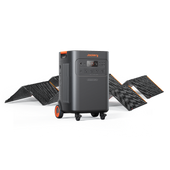











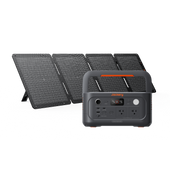



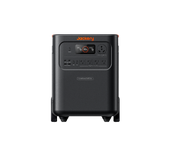
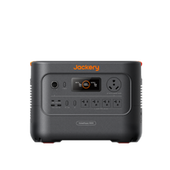





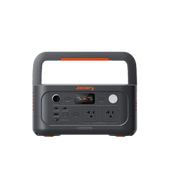





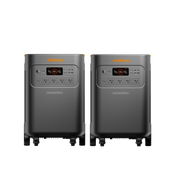
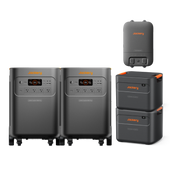





![[Add - on] Jackery Manual Transfer Switch for Explorer 5000 Plus - Jackery](http://www.jackery.com/cdn/shop/files/add-on-jackery-manual-transfer-switch-for-explorer-5000-plus-9017324.png?v=1754016782&width=170)

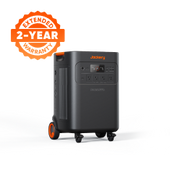
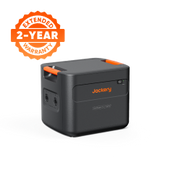
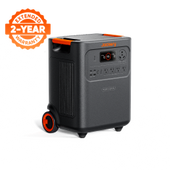






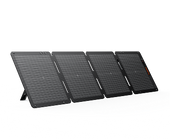




















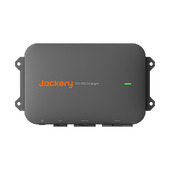




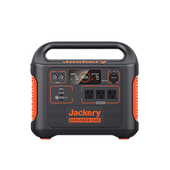






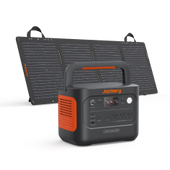
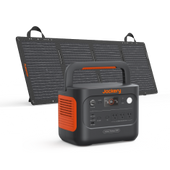






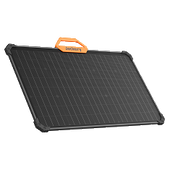




































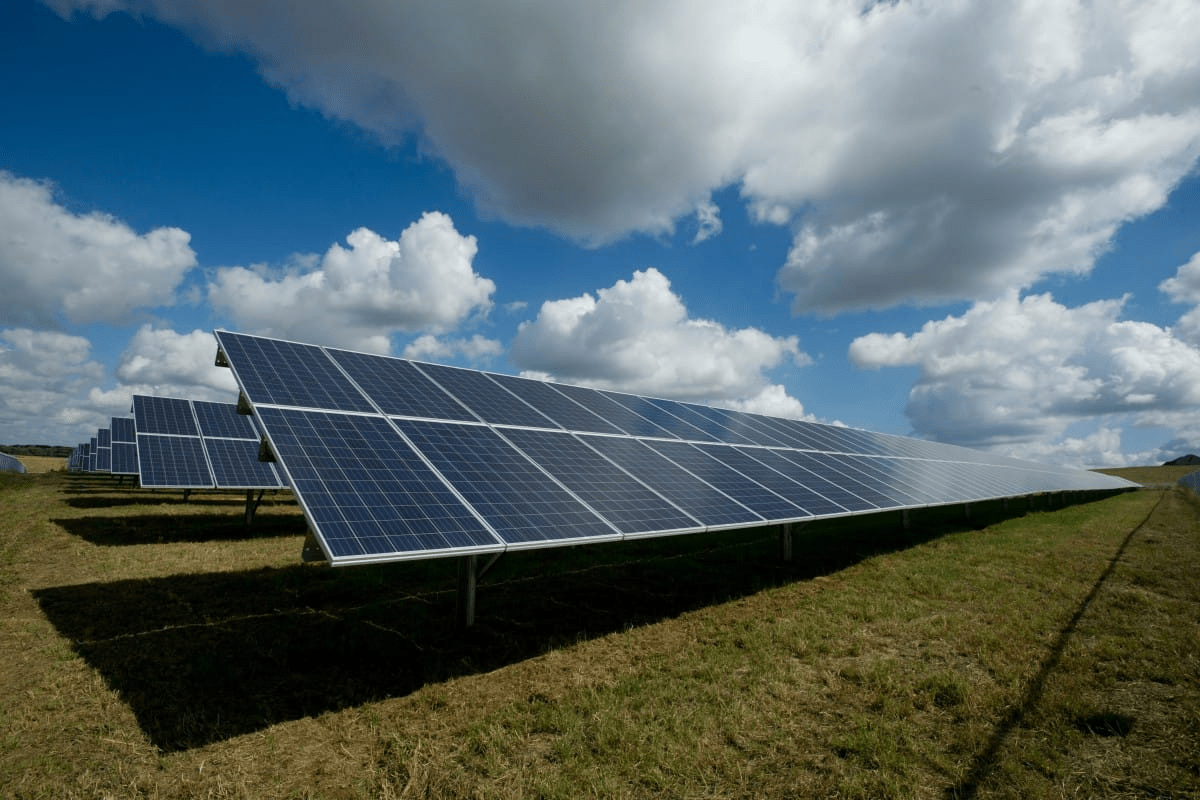





Leave a comment